Horns are permanent projections on the head of various hoofed mammals. They are composed of a bony core covered by a sheath of keratin.
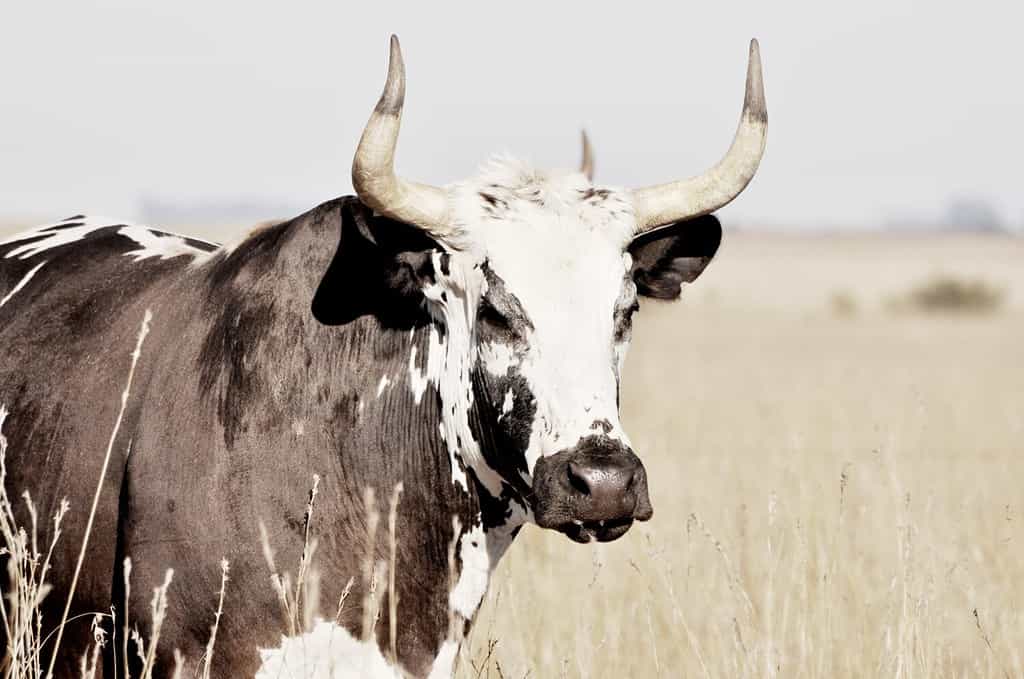
Horns are permanent projections on the head of various hoofed mammals.
©Wirestock Creators/Shutterstock.com
Summary
Many animals grow horns. Although the words horns and antlers are sometimes used interchangeably, antlers are not the same. Antlers are a pair of solid bone, branched structures that an animal sheds annually. Antlers are found mainly in males of the deer family. Horns are permanent and unbranched. True horns are made of a bony core, which is covered in keratin.
Horns are on hoofed mammals such as cattle, buffalo, goats, and antelopes. Some animals may have hard and pointy features on their heads, but they are not true horns. For example, giraffes have a pair of bony bumps on the top of their heads. They are composed of ossified cartilage covered with furred skin.
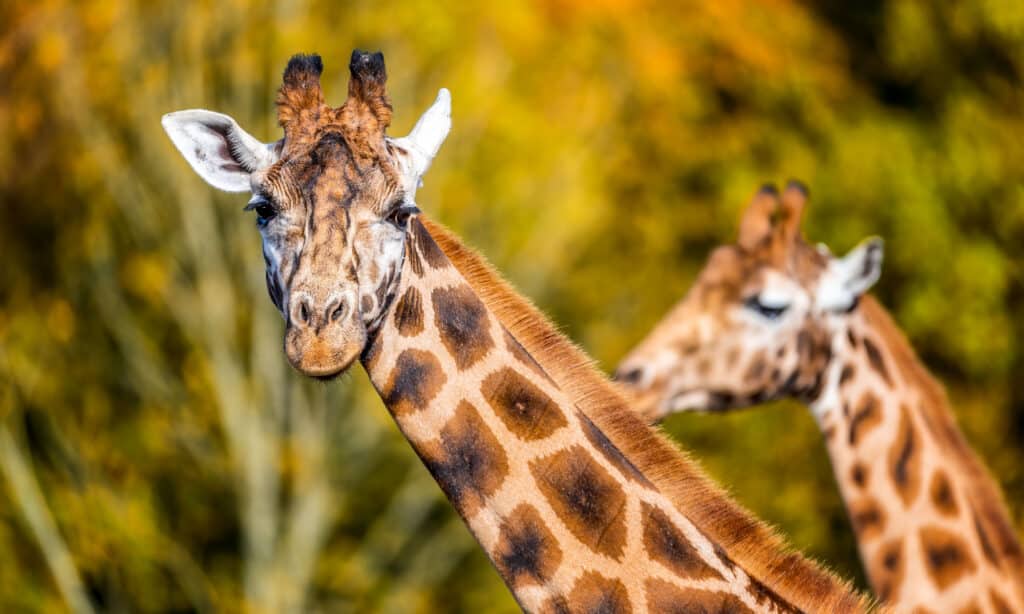
Giraffes have a pair of bony bumps on the top of their heads. They are composed of ossified cartilage covered with furred skin.
©Jane Rix/Shutterstock.com
What Are They Made Of?
Horns grow differently on an animal than antlers. Unlike antlers, horns are never shed. In fact, in some species, horns grow continuously. They begin as a small bony growth under the skin. Horns have a bony center and fuse to the animal’s skull bones.
The bony structures are covered in sheaths of keratin. Keratin is a protein in the hair, nails, and horns of mammals. Keratin comes in two types. These are Alpha-keratin and Beta-keratin. Alpha-keratin is the type horns and nails are made of. Beta-keratin is in the feathers, claws, and beaks of birds and reptiles.
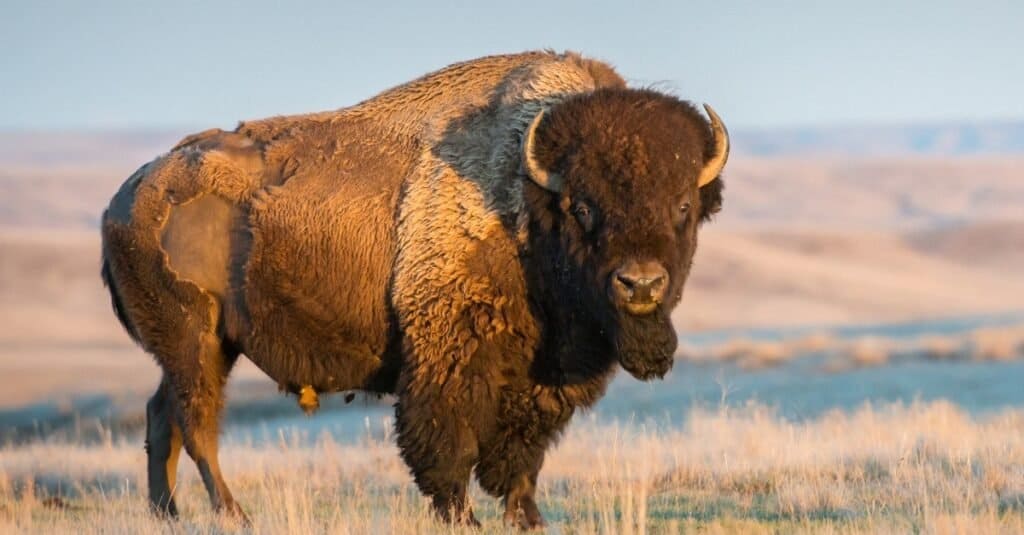
Bison and buffalo are not the same species. One
big difference
is in their horns.
©iStock.com/Jillian Cooper
What Animals Have Them?
True horns are found on hoofed mammals including:
- Cows. Cattle use their horns for defense and thermo-regulation. They have horns with connection to their sinuses, they allow air to circulate through the bone.
- Goats. Unlike other species, both male and female goats grow horns. The horns grow continuously throughout the animal’s life.
- Sheep. Sheep horns are typically curved and spiral, unlike goat horns.
- Bison and Buffalo. Bison and buffalo are not the same species. One big difference is in their horns. The North American bison has shorter horns, while buffalo (found in Asia and Africa) have large and curved horns.
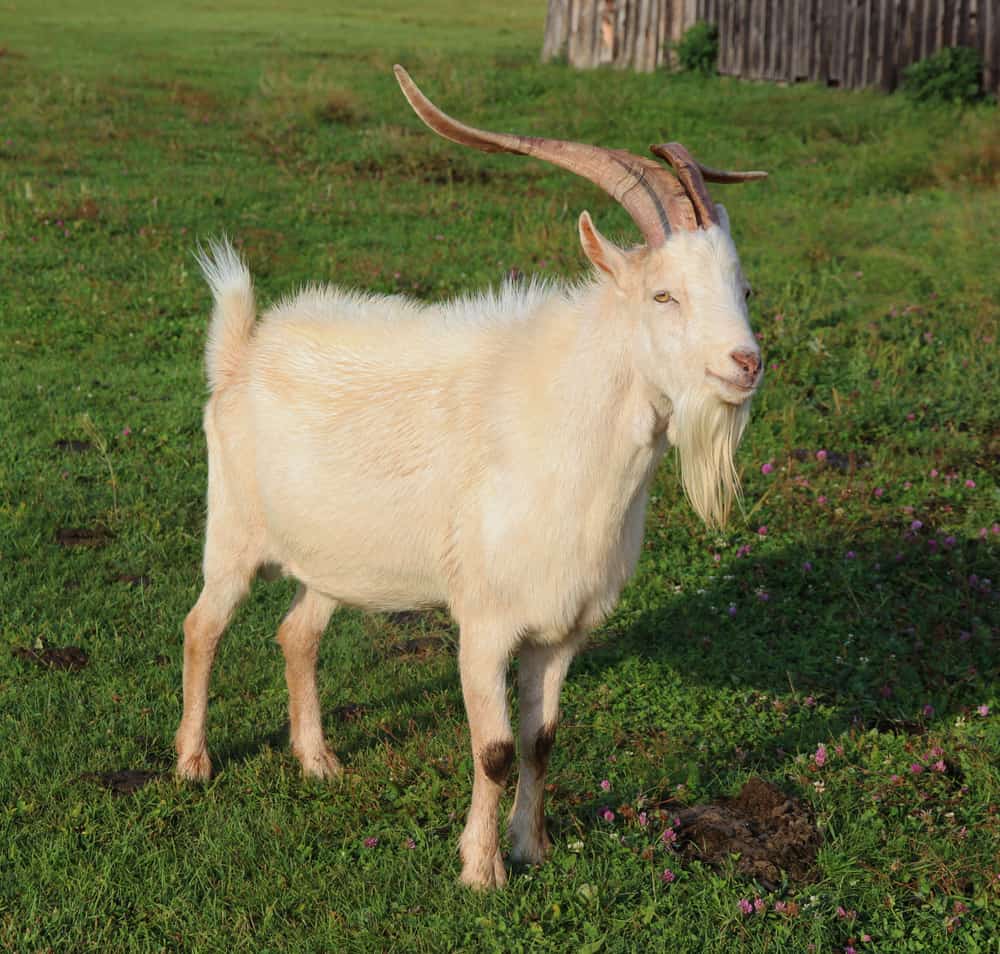
Unlike other species, both male and female goats grow
horns
. The horns grow continuously throughout the animal’s life.
©Anna-Artmade/Shutterstock.com
A Lizard With a True Horn
Horned lizards have horn structures on their heads that are a bony core and covered with hard keratin. And just like mammalian horns, these are true horns.
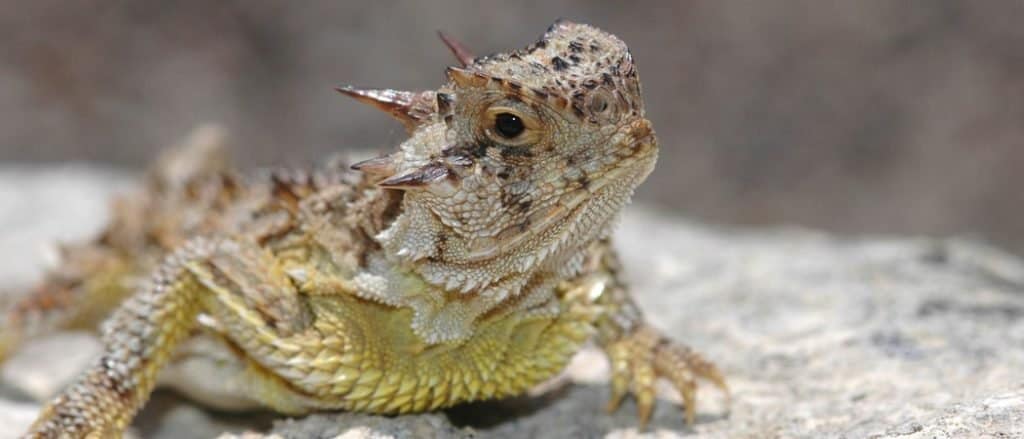
Horned lizards
have horn structures on their heads that are a bony core and covered with hard keratin.
©iStock.com/Shoemcfly
Other Animals With Horn-Like Growths
- Antelope. Antelopes have neither true horns nor antlers, but a combination of each. The sheath is made of keratin and the horns are shed each year.
- Giraffe. Not a true horn, giraffes have bony bumps called ossicones (cartilage covered in furred skin). Some giraffes have up to five ossicones on their heads.
- Jackson’s chameleon. Also known as the Kikuyu three-horned chameleon, the Jackson’s chameleon has three horns on its skull with a keratin covering, similar to a mammal’s horns
- Insects. Some insects, such as beetles, have horn-like structures on their heads. These are not true horns but are outgrowths of the insect’s exoskeleton.
- Rhinoceros. The rhino’s distinctive horn is made of keratin. Unlike horned mammals, the center is not bone.
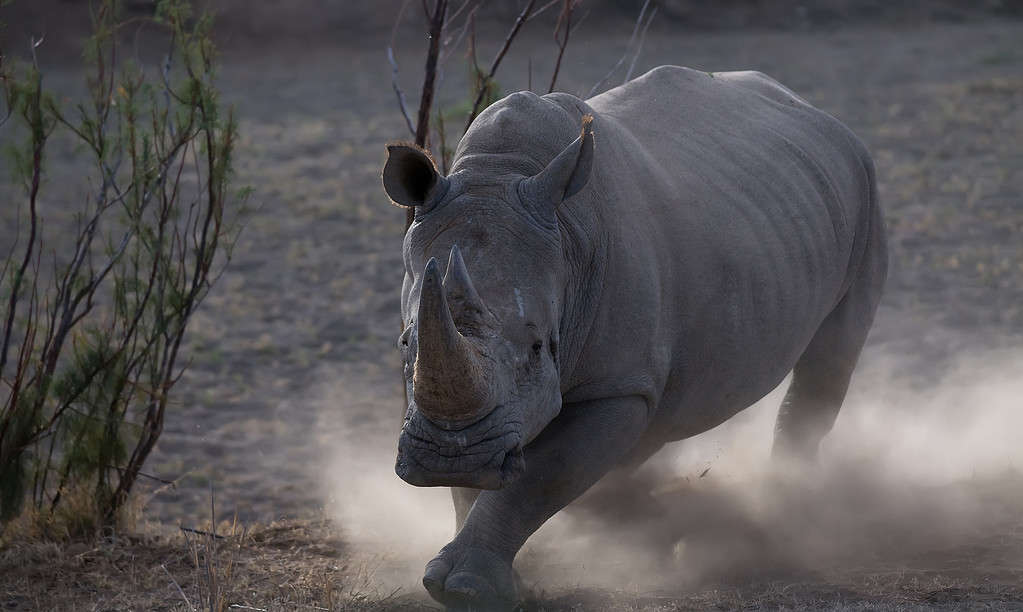
The rhino’s distinctive horn is made of keratin. Unlike horned mammals, the center is not bone.
©Chris Twine/Shutterstock.com
How Do Animals Use Them?
Different species have different uses for their horns.
Some possible uses include:
- Defense from predators.
- Fighting members of their species to defend territory or find mates.
- Courtship displays.
- Cooling and temperature regulation.
- As a tool to strip bark from trees or to root in the soil.
What Do Tusks Have in Common With Horns?
Animals with tusks (such as elephants, walruses, and boars) often use their tusks for the same functions as horns. Similarly, they grow continuously throughout the animal’s life, as do horns. However, tusks are not horn material but are actually oversized teeth.
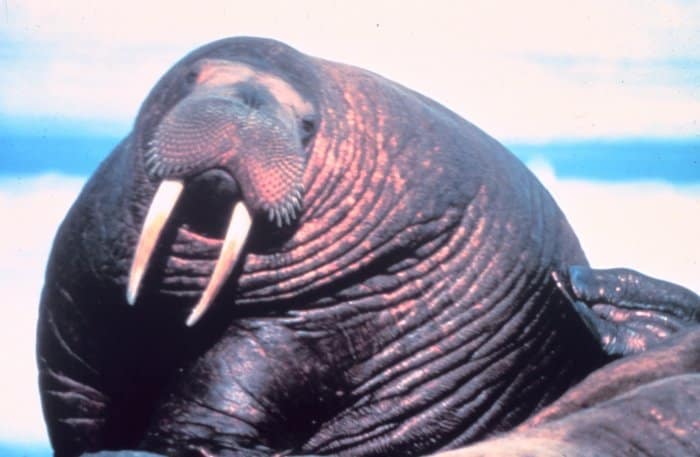
Tusks are not horn material but are actually oversized teeth.
©Office of NOAA Corps Operations, Public domain, via Wikimedia Commons – License
How Do Humans Use Animal Horns?
Throughout history, humans have used animal horns for their own use, such as musical instruments, tools, and decorations. Sadly, some hunt animals solely for their horns. Even though the practice is illegal, poachers hunt rhinos to traffic their horns. The extensive hunting has caused rhino populations to decline since the 1970s.
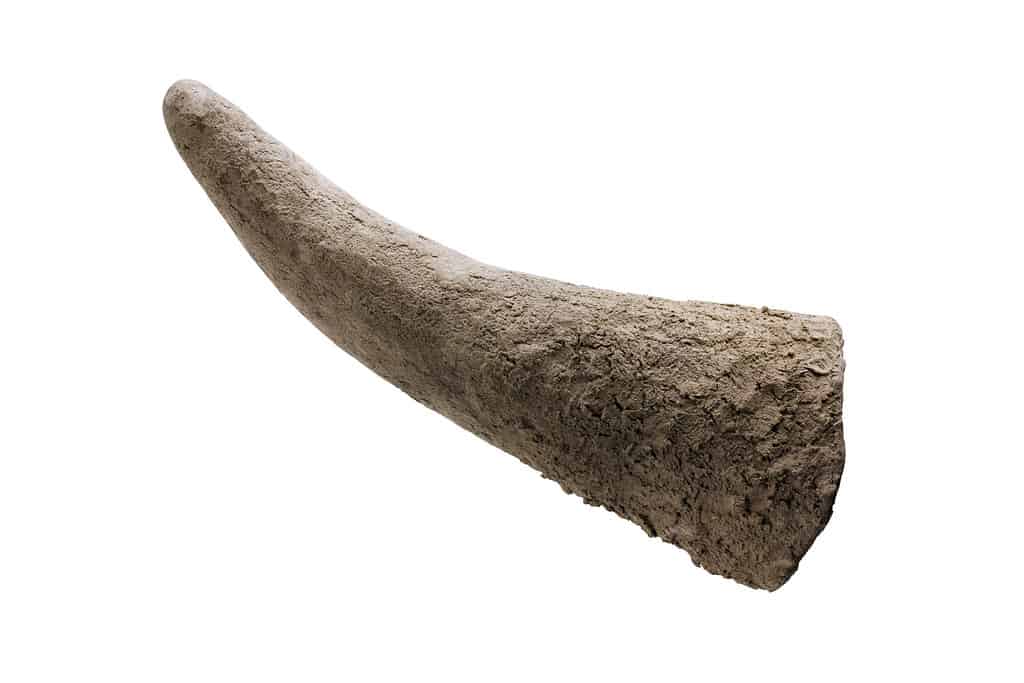
Throughout history, humans have used animal horns for their own use, such as musical instruments, tools, and decorations.
©Etienne Outram/Shutterstock.com
More Interesting Facts
- The Asian water buffalo has the longest horns of any living animal. According to Guinness World Records, a water buffalo in 1955 had horns measuring 13 feet and 10 inches from tip to tip.
- The now-extinct horned gopher was the only rodent to ever have horns. They are also the smallest horned mammal to exist.
- The horns on a bighorn sheep may weigh up to 30 pounds.
- The Triceratops lived over 65 million years ago. The massive dinosaur had three horns made of keratin on its head that it used for ramming and killing enemies.



